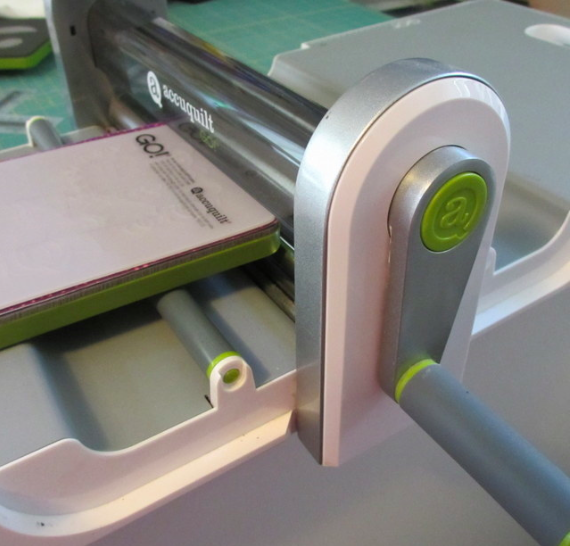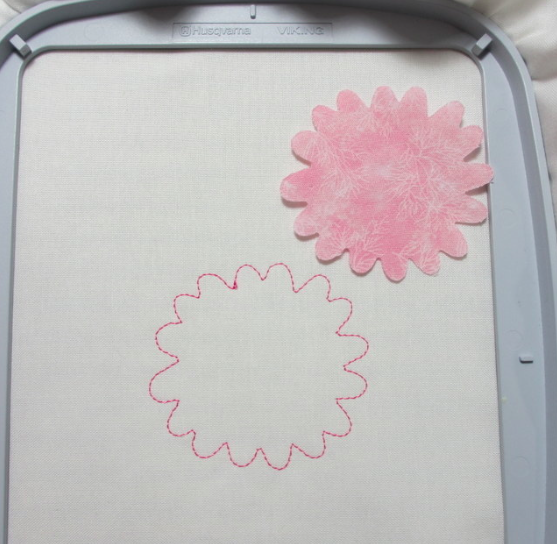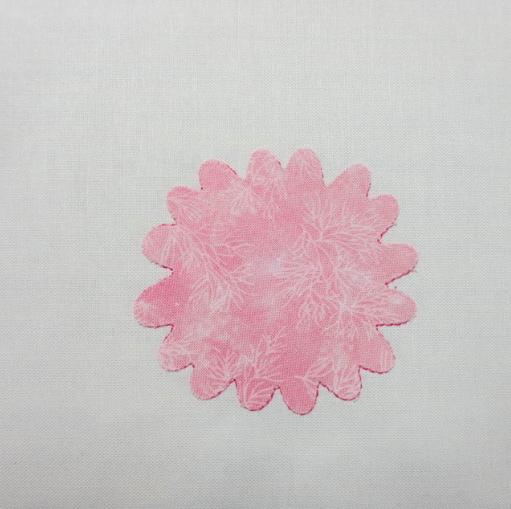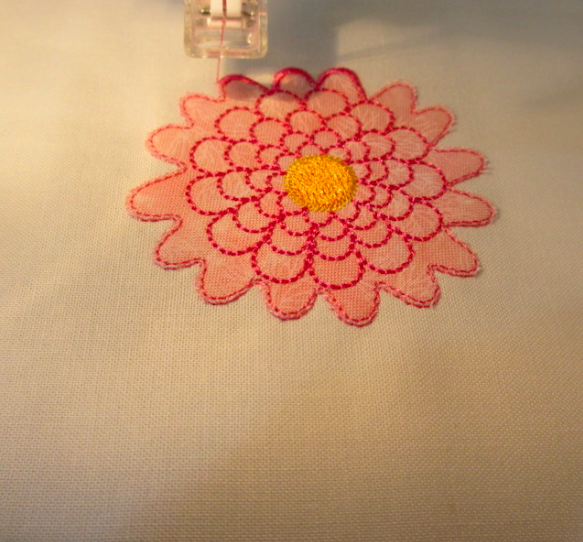Just imagine what beautiful things we could create with our embroidery machine if our appliqué shapes could be cut automatically for us and each one was perfect. The only thing left for us to do is stitch them out. Guess what? We can do that with the new tools available to us: die cutting machines and electronic cutting machines.
Check out how die cutting machines can transform your shape cutting.
Die cutting machines use a die made of blades embedded in foam. The fabric is sandwiched between the blades and a plastic mat. This is run through a roller that places pressure on the sandwich and this cuts the shapes. Electronic machines work differently in that the shape is created with computer software and that shape is transmitted to the machine.
These die cutting machines are easy to use, portable, and priced so that they are accessible. You might have seen them used in scrapbooking—but luckily now they’ve come to the fabric world. This is a picture of a flower die that is used for machine embroidery appliqué.

These die cutting machines cut the same shape from a die over and over, and can even cut multiple layers of fabric. These shapes can range from simple to very complex. This eliminates the need to trim away intricate design areas. The flower from the die above is a great example. The steps for completing machine embroidery appliqué using die cut shapes follow:
1. Cut the shapes.
Appliqué fabric is prepared with a light weight iron-on fusible on the wrong side. The paper remains on the fabric until cutting is complete. Depending on the types of fabric and paper, one can cut as many as four layers of appliqué shapes at a time.
Layer the fabric(s) over the die blades with the paper side down. Place the mat over the fabric and roll it through the cutter. After the shape is cut, remove the paper backing. An easy way to remove the backing is to score the paper with a pin and it will peel off easily.

2. Stitch the placement lines.
The background fabric is hooped and placed on the embroidery machine. An appliqué placement line is stitched, that fits the shape exactly. There is no need to trim when you use shapes cut like this.

3. Fuse the appliqué shape to the background fabric.
The hoop is removed from the machine, and the appliqué is then fused just inside or just covering the placement stitches. I use a mini iron to fuse shapes like this so that I can get the fabric and stitches lined up nicely.

Some appliqué designs may have more than one fabric and require the steps for stitching additional placement lines and fusing of fabric shapes to be repeated.
4. Complete the machine embroidery stitching.
The hoop is then returned to the machine to complete the embellishment stitching.

And your appliqué is finished. How easy is that? Here’s a free sample file from the Craftsy pattern store that you can use to try this method. If you don’t have a Circle die and cutter, a stitch file is included so that you can make a template for cutting.
What questions do you have about this method? Does it appeal to you?
One of the big questions that I am always asked, is whether the fusible web will make the appliqué stiff. My response to that is that I have been using fusible web in appliqué projects for almost thirty years. And I still have the baby quilts that were made for my children using fusible web in the appliqué. Those quilts are as soft as can be, thirty years later.
Machine embroidery appliqué that is done using pre-cut/die cut shapes eliminates some of the usual steps and allows us to do more embroidery and thus more projects. It also allows us to create appliqué with more intricate designs. And every day there are more and more embroidery digitizers who are using die cut shapes for their machine embroidery appliqué!

Share tips, start a discussion or ask one of our experts or other students a question.
No Responses to “Modern Cutting Methods for Machine Embroidery Appliqué”